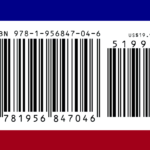Introduction
Have you ever scanned a product at a store and wondered about the unique code printed on it? Universal Product Codes (UPCs) play a crucial role in modern retail, helping to identify products and streamline inventory management. In a world where thousands of products compete for attention, having unique identifiers like UPCs is essential for efficient operations. However, managing product inventory without these codes can lead to confusion and inefficiencies. UPCs, such as UPC 810043986496, serve as a reliable solution to these challenges, simplifying processes for retailers and consumers alike.
In this article, we will explore what UPCs are, delve into the specifics of UPC 810043986496, and discuss the vital role UPCs play in the retail industry.
Section 1: Understanding UPCs
Structure
The structure of a UPC consists of two main components:
- Number System Character: The first digit indicates the type of product. For example, a “0” typically signifies a standard product.
- Manufacturer and Product Codes: The next five digits represent the manufacturer, followed by five digits that identify the specific product. The final digit is a check digit used for error detection.
Applications
UPCs are used across various industries, including:
- Retail: For product identification and sales tracking.
- Warehousing: To manage inventory efficiently.
- Manufacturing: For tracking materials and finished goods.
- E-commerce: To streamline online sales and product listings.
Section 2: UPC 810043986496: A Deep Dive
Product Identification
To understand the significance of UPC 810043986496, we need to identify the specific product associated with this code. Typically, a quick search through a UPC database reveals that this code corresponds to a particular item in the market.
Manufacturer Information
The manufacturer linked to UPC 810043986496 can also be identified through UPC databases. Knowing the manufacturer helps in understanding product quality, origin, and reliability.
Product Category
Based on the UPC, we can determine the product category. This may range from electronics to consumables, allowing retailers to categorize products more effectively for inventory management.
Section 3: The Importance of UPCs in Retail
Inventory Management
UPCs streamline inventory tracking and management by providing a standardized method for identifying products. Retailers can easily scan products during receiving and sales, reducing human error and saving time.
Point of Sale (POS) Systems
In POS systems, UPCs facilitate quick transactions. When a customer checks out, the cashier scans the UPC, instantly retrieving the product’s price and information, leading to a smoother checkout experience.
Supply Chain Management
UPCs enhance supply chain operations by enabling real-time tracking of products from manufacturers to consumers. This level of visibility can help businesses manage stock levels and forecast demand more accurately.
Section 4: UPC Databases and Lookup Tools
UPC Databases
Online databases store extensive information about UPC codes and their associated products. These databases can be accessed by retailers, manufacturers, and consumers for various purposes, such as product verification and inventory management.
Lookup Tools
Several tools and websites allow users to search for product information using UPCs. Websites like UPCitemdb or Barcode Lookup enable users to find detailed descriptions, prices, and manufacturer information, making it easy to compare products.
Section 5: Future Trends in UPC Technology
Enhanced UPCs
As technology evolves, enhanced UPCs like RFID (Radio Frequency Identification) and QR codes are becoming more prevalent. These technologies offer improved tracking capabilities and can store more information than traditional UPCs.
Data-Driven Insights
The data collected through UPCs can be leveraged for market analysis and business intelligence. Retailers can analyze consumer behavior, track sales trends, and make data-driven decisions to enhance their business strategies.
You May Also Like: Terri Dolan Planesusy: Innovator in Aircraft Management
Conclusion
In summary, UPC 810043986496 exemplifies the essential role of UPCs in modern retail. These unique codes simplify inventory management, enhance POS transactions, and optimize supply chain operations. As we move forward, the importance of UPCs will only increase, especially with the advent of new technologies that complement their functionality. Understanding and utilizing UPCs effectively can lead to more efficient retail practices and improved customer experiences.
FAQs
- What is a UPC?
- A Universal Product Code (UPC) is a 12-digit code used to identify products in retail settings.
- What is the structure of a UPC?
- A UPC consists of a number system character, manufacturer code, product code, and a check digit.
- How is UPC 810043986496 used?
- This UPC uniquely identifies a specific product, allowing for efficient inventory management and sales tracking.
- Where can I look up UPC information?
- You can use online databases like UPCitemdb or Barcode Lookup to find detailed product information using UPCs.
- What are some future trends in UPC technology?
- Emerging technologies like RFID and QR codes are enhancing the capabilities of traditional UPCs, providing more detailed product information.










